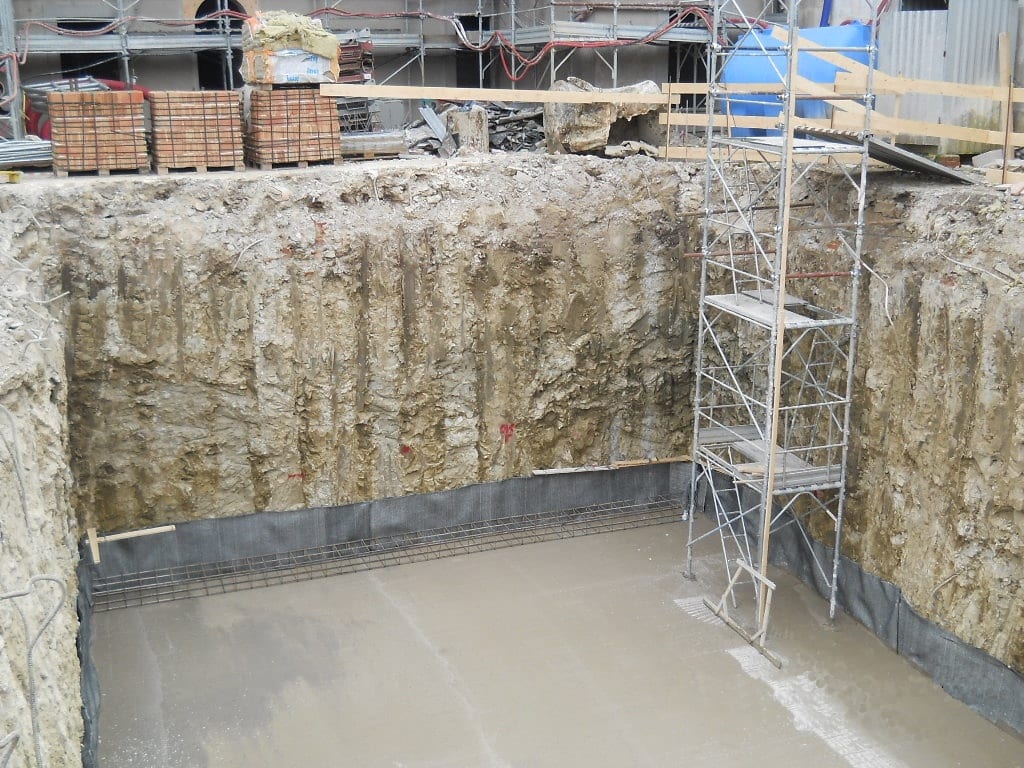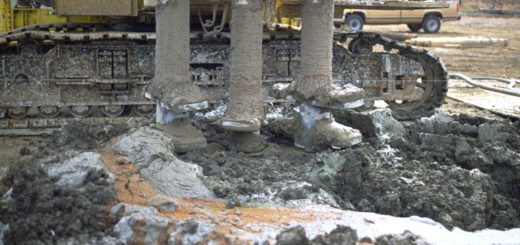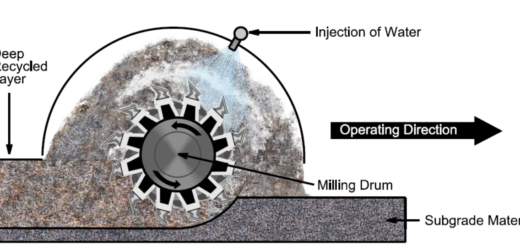Different Types of Grouting in Soil
Soil stabilization is a crucial aspect of construction and civil engineering projects. One effective method of soil stabilization is grouting. Grouting involves injecting a fluid-like material into the ground to fill voids, improve strength, control water flow, and enhance the overall stability of soil. There are Different Types of Grouting techniques available, each suited for specific soil conditions and project requirements. In this article, we will explore different types of grouting in soil, their processes, applications, and benefits.
Grouting in soil refers to the process of injecting a fluid material into the ground to improve the properties of soil. It is commonly used in geotechnical engineering to enhance the stability and load-bearing capacity of soil, control water flow, and mitigate potential hazards such as soil liquefaction. Different grouting methods are employed based on the specific soil conditions and desired outcomes.
Let’s discuss each type of grouting method in detail.
Cementitious Grouting
Definition and Purpose
Cementitious grouting involves injecting a mixture of cement, water, and additives into the ground. The cementitious grout penetrates the soil, solidifies, and forms a stable mass. The primary purpose of cementitious grouting is to fill voids and fractures, increase soil strength, and reduce permeability.
Process and Equipment
The process of cementitious grouting begins with drilling boreholes into the ground at predetermined locations. A grout mix is then prepared by mixing cement, water, and sometimes additives to enhance flowability or accelerate the curing process. The grout mix is pumped into the boreholes using specialized equipment such as grout pumps, tremie pipes, or injection packers. The grout fills the voids and hardens over time, effectively stabilizing the soil.
Applications and Benefits
Cementitious grouting finds applications in various scenarios, including:
- Foundation stabilization: It can be used to stabilize foundations affected by soil settlement or subsidence.
- Dam and tunnel construction: Cementitious grouting helps control water flow, prevent leakage, and enhance the stability of dams and tunnels.
- Soil improvement: It improves the load-bearing capacity of weak or loose soil, making it suitable for construction.
- Groundwater control: Cementitious grouting can create impermeable barriers to control water flow in the ground, preventing erosion and seepage.
The benefits of cementitious grouting include increased soil strength, improved stability, reduced permeability, and enhanced overall performance of the soil. This more conventionally done when compared to Different Types of Grouting other systems.
Chemical Grouting
Definition and Purpose
Chemical grouting, also known as resin grouting or injection grouting, involves injecting chemical-based grouts into the ground. These grouts typically consist of polyurethane, acrylic, or epoxy resins. The purpose of chemical grouting is to create a barrier that fills voids, stabilizes soil, and controls water flow.
Process and Equipment
The process of chemical grouting begins with drilling boreholes into the ground, similar to cementitious grouting. The chemical grout is prepared by mixing resin components and catalysts to achieve the desired properties, such as viscosity and curing time. The grout is then injected into the boreholes using specialized pumps and injection equipment.
The chemical grout reacts and expands upon contact with water, filling voids and fractures in the soil. As it cures, it forms a solid mass that improves soil stability and reduces permeability.
Applications and Benefits
Chemical grouting has a wide range of applications, including:
- Soil stabilization: It can be used to stabilize loose or weak soil, preventing settlement or erosion.
- Underground construction: Chemical grouting is effective in stabilizing soil around tunnels, underground utilities, and excavation sites.
- Dam and levee repair: It helps seal cracks and control water flow in dams and levees, enhancing their structural integrity.
- Groundwater control: Chemical grouting is useful in creating barriers to control water flow, preventing seepage and contamination.
The benefits of chemical grouting include increased soil strength, improved stability, reduced permeability, and the ability to target specific areas with precision.
Bentonite Grouting
Definition and Purpose
Bentonite grouting involves injecting bentonite-based grout into the ground. Bentonite is a type of clay that swells upon contact with water, forming a gel-like substance. The purpose of bentonite grouting is to seal and stabilize soil, control water flow, and prevent groundwater contamination.
Process and Equipment
In bentonite grouting, boreholes are drilled into the ground, similar to other grouting methods. A bentonite slurry is prepared by mixing bentonite powder with water. The slurry is then pumped into the boreholes using specialized grouting equipment.
As the bentonite slurry comes into contact with water in the ground, it swells and forms a gel-like barrier that fills voids and fractures, effectively stabilizing the soil and controlling water flow.
Applications and Benefits
Bentonite grouting is commonly used in the following applications:
- Sealing underground structures: It is effective in sealing underground storage tanks, tunnels, and basements to prevent water intrusion.
- Soil sealing: Bentonite grouting can create impermeable barriers to control water flow, preventing soil erosion and improving stability.
- Environmental remediation: It is used to contain and prevent the spread of contaminated groundwater.
The benefits of bentonite grouting include excellent sealing properties, low permeability, compatibility with various soil types, and cost-effectiveness.
Compaction Grouting
Definition and Purpose
Compaction grouting, also known as pressure grouting, is a technique used to improve soil density and increase load-bearing capacity. It involves injecting a low-slump, low-mobility grout into the ground under high pressure.
Process and Equipment
The process of compaction grouting starts with drilling closely spaced injection holes into the ground. A stiff grout mix, typically consisting of cement, sand, and water, is prepared. The grout is then injected into the ground under high pressure using specialized grout pumps.
As the grout is injected, it displaces the surrounding soil, compacting it and increasing its density. This results in improved soil stability and load-bearing capacity.
Applications and Benefits
Compaction grouting is suitable for various applications, including:
- Foundation support: It can be used to stabilize foundations affected by settlement or weak soil conditions.
- Sinkhole remediation: Compaction grouting is effective in filling and stabilizing sinkholes, preventing further subsidence.
- Soil densification: It improves the load-bearing capacity of loose or weak soil, making it suitable for construction.
- Retaining wall stabilization: Compaction grouting can enhance the stability of soil behind retaining walls, reducing the risk of failure.
The benefits of compaction grouting include increased soil density, improved load-bearing capacity, enhanced structural support, and reduced settlement.
Jet Grouting
Definition and Purpose
Jet grouting is a versatile technique that involves the high-pressure injection of grout to create a soil-cement column in the ground. The purpose of jet grouting is to improve soil strength, increase stability, and control water flow.
Process and Equipment
In jet grouting, a high-velocity jet of grout is injected into the ground at predetermined locations. The grout is typically a mixture of cement, water, and sometimes additives. The high-pressure jet breaks up the soil and mixes it with the grout, creating a soil-cement column.
Jet grouting can be performed using different methods, including single fluid, double fluid, and triple fluid systems. The choice of method depends on the specific soil conditions and project requirements.
Applications and Benefits
Jet grouting has a wide range of applications, including:
- Soil stabilization: It can stabilize loose or weak soil, improving its bearing capacity for foundations and structures.
- Excavation support: Jet grouting can create soil-cement walls to provide temporary or permanent support during excavations.
- Groundwater control: It helps control water flow by creating impermeable barriers, preventing seepage and erosion.
- Soil consolidation: Jet grouting can consolidate loose or liquefiable soil, reducing the risk of settlement or soil liquefaction.
The benefits of jet grouting include improved soil strength, enhanced stability, controlled water flow, and the ability to create customized soil-cement columns.
Permeation Grouting
Definition and Purpose
Permeation grouting, also known as permeation injection, is a technique used to fill the voids and improve the stability of granular soils. It involves injecting low-viscosity grout into the ground, which permeates the soil and solidifies.
Process and Equipment
In permeation grouting, boreholes are drilled into the ground at regular intervals. A low-viscosity grout, typically consisting of cement, water, and additives, is prepared. The grout is then injected into the ground under low pressure using specialized equipment.
The grout permeates the voids in the soil, filling them and forming a solid mass. The solidified grout improves the cohesion and stability of the granular soil.
Applications and Benefits
Permeation grouting is commonly used in the following applications:
- Ground improvement: It can improve the stability and load-bearing capacity of loose or granular soils, making them suitable for construction.
- Sealing: Permeation grouting is effective in sealing underground structures, preventing water infiltration or leakage.
- Tunneling: It can stabilize the soil around tunnels, reducing the risk of ground settlement or collapse.
The benefits of permeation grouting include enhanced soil stability, reduced permeability, improved load-bearing capacity, and prevention of soil erosion.
Fracture Grouting
Definition and Purpose
Fracture grouting is a technique used to fill and seal fractures, joints, and fissures in the ground. The purpose of fracture grouting is to improve the stability of rock formations and prevent the flow of water or other substances through these fractures.
Process and Equipment
Fracture grouting involves drilling boreholes into the rock formations that contain fractures or joints. A grout mix is prepared, usually consisting of cement, water, and additives. The grout is then injected under pressure into the boreholes using specialized equipment.
As the grout is injected, it flows into the fractures and joints, filling them completely. The grout solidifies, creating a strong and impermeable barrier that enhances the stability of the rock formation.
Applications and Benefits
Fracture grouting has a range of applications, including:
- Rock stabilization: It is effective in stabilizing fractured rock masses, reducing the risk of rockfalls or collapses.
- Dam rehabilitation: Fracture grouting can be used to seal and stabilize fractures in dam foundations, enhancing their structural integrity.
- Underground mining: It helps to reinforce and strengthen fractured rock formations in underground mines, improving safety and stability.
- Tunneling: Fracture grouting is used to fill and seal fractures encountered during tunnel construction, preventing water ingress and soil instability.
The benefits of fracture grouting include increased rock stability, reduced permeability, improved load-bearing capacity, and enhanced structural integrity.
By utilizing fracture grouting techniques, engineers and geotechnical professionals can effectively mitigate the risks associated with fractured rock formations and ensure the long-term stability and safety of various construction projects.
Grouting in soil is a valuable technique for soil stabilization in various construction and civil engineering projects. Cementitious grouting, chemical grouting, bentonite grouting, compaction grouting, jet grouting, and permeation grouting are some of the commonly used methods. Each method has its own advantages and applications, depending on the specific soil conditions and project requirements.
Cementitious grouting is effective for filling voids, increasing soil strength, and reducing permeability. Chemical grouting utilizes resin-based grouts to create barriers, stabilize soil, and control water flow. Bentonite grouting, on the other hand, uses bentonite clay to seal and stabilize soil, preventing water intrusion. Compaction grouting helps improve soil density and load-bearing capacity through the injection of low-slump grout. Jet grouting involves high-pressure injection to create soil-cement columns, providing stability and control over water flow. Permeation grouting uses low-viscosity grout to fill voids in granular soils and enhance stability.
Understanding the different types of grouting techniques allows engineers and construction professionals to choose the most appropriate method for their projects. By utilizing these methods effectively, soil stability can be improved, and potential hazards can be mitigated, ensuring the success and longevity of construction projects.
FAQs: Different Types of Grouting
1. How long does it take for grout to set in cementitious grouting?
The setting time for cementitious grout can vary depending on factors such as the type of cement used, environmental conditions, and mix design. Generally, it takes a few hours to a few days for the grout to fully set and achieve its desired strength.
2. Is chemical grouting environmentally friendly?
Chemical grouting can be environmentally friendly depending on the specific grout materials used. Many modern chemical grouts are designed to be non-toxic, non-hazardous, and environmentally friendly. It is important to choose grouts that comply with environmental regulations and guidelines.
3. Can jet grouting be used in all soil types?
Jet grouting can be used in a wide range of soil types, including cohesive soils, granular soils, and even mixed soils. However, the effectiveness and efficiency of jet grouting may vary depending on the specific soil conditions. Site-specific evaluations and engineering expertise are crucial in determining the suitability of jet grouting for a particular project.
4. Does compaction grouting cause any damage to existing structures?
When performed by experienced professionals, compaction grouting should not cause any significant damage to existing structures. However, it is important to assess the potential impact and consider factors such as proximity to structures, ground movement, and vibrations during the grouting process.
5. How long does the solidification process take in permeation grouting?
The solidification time for permeation grouting depends on the grout formulation, soil conditions, and other factors. It can range from a few minutes to several hours. Monitoring and testing are conducted to determine when the grout has solidified sufficiently.




